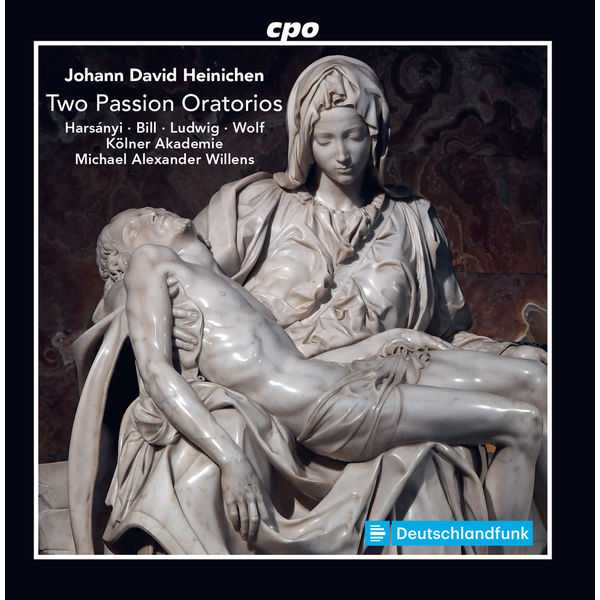

Composer: Johann David Heinichen
Performer: Elena Harsányi, Elvira Bill, Mirko Ludwig, Andreas Wolf
Orchestra: Kölner Akademie
Conductor: Michael Alexander Willens
Format: FLAC (tracks)
Label: CPO
Catalogue: 555507-2
Release: 2022
Size: 1.34 GB
Recovery: +3%
Scan: yes
Come? S’imbruna il ciel! Occhi piangete!, S. 29
01. Come? S’imbrune il ciel
02. E lumi e cor non ha chi lagrimar
03. Ben ha cor di Giudeo
04. Mio Gesù, dolce adorato
05. Che miro?
06. O qual dura penar!
07. Genti, genti
08. Addolorata ed adorate Madre
09. Madre, non isdegnar
10. Madre in Amor
11. Lato, mani, piè forati
12. O ciel?
13. Croce mal nata
14. Qual rigore di padre!
15. Miseri ch’habbiam fatto?
16. Mia Sion, che facesti?
17. Piani popolo mio
18. Alla croce alme redente
L’aride tempie ignude, S. 30
19. Sinfonia
20. L’aride tempie ignude
21. Di mia vittoria su questa tomba
22. Non dir superbo Gloria dell’armi tue d’un dio la morte
23. Di Giesù tenere viscere
24. E non ti sfacci cuor dispietato
25. Marmi, ch’estino il sommo ben chiudete
26. Lagrime avventurose
27. Qual pianta
28. Erger ti ardisci al favellar di spene
29. Per accendere altrui del vivo zelo
30. Quel core sincere sol giunge
The Passion Music Johann David Heinichen wrote for the Dresden court is a document of cultural and confessional openness of the Saxon residence, and his two Italian oratorios heard here are surrogates of large-scale Passion music.
Come? S’imbruna il ciel – composed in 1728 – is the latest of the “sepolcri”, his other Passion L’aride tempie ignude the first of the “sepolcri” to survive from Heinichen in Dresden. Both texts are by Stefano Pallavicino, who had been active at the Dresden court since 1719.
In the first-mentioned Passion, the meditation on the Passion event recurs to the experience of the earthquake that, according to biblical accounts, occurred immediately after the death of Jesus. The description of the violent natural events gives Mary the Mother of God, John (Jesus’ favorite disciple), and Mary Magdalene an opportunity to reflect on their relationship to the Crucified. Different aspects of affection and love are thematized.
The meditation on the Passion event in the second-named Passion is designed as an allegorical play of death (Morte) and hope (Speranza), divine love (Amor divino) and penance (Poenitenza), and follows an easily comprehensible dramaturgy. The affinity to opera seria is evident in both passions not only in the arrangement of the pieces. The keys, gestures and instrumentation also correspond to the models familiar from baroque musical theater. Full of affect!